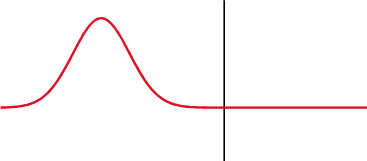I know that cable TV use coaxial cable with alternating current frequencies varying from 5 MHz to 750 MHz.
Why/How a alternating current of, for example, 5 MHz , 10 MHz, 20 MHz, 100 MHz, 300 MHz, 500 MHz, 650 MHz, etc, do not adds ups or cancel each other, since all those current frequencies are passing through the wire at the same time?
I learnt from high school that all waves interfere with each other, and that is the principle of noise cancelling used in headphones.


Best Answer
... All waves on a potential field (say, the electric field in a coax wave guide, or the air) do superimpose, but they do not necessarily destructively interfere with each other.
Instead, model your signals \$s_1\$, \$s_2\$ and so on to be
$$s_n(t) = A_n(t)\cos(2\pi f_n t + \phi_n(t))$$
and \$A_n(t)\$ and \$\phi_n(t)\$ to carry the actual information. We call these the amplitude and phase of the signal, and they can change over time (not much info to get through if they couldn't!). \$f_n\$ is your carrier frequency, i.e. the 300, 500, whatever MHz in your question. In reality, you'll have to assume \$f_n\$ is so high that for a couple of oscillations of the cosine, the amplitude and phase stay pretty much constant.
Now, your over receive signal would be \$r(t)\$,
$$r(t) = \sum\limits_n s_n\text.$$
Then it's quite easy to show that you can re-extract the individual \$s_n\$ without any influence of the other \$s\$. You can, for example, multiply your \$r\$ with a cosine of the one carrier frequency you care about, i.e. with \$x(t) = \cos(2\pi f_n t)\$.
Get out your trigonometric identity table from high school! \$\cos(a)\cdot\cos(b) = \frac12 (\cos(a+b)+\cos(a-b))\$, and thus
\begin{align} s_n(t)\cdot x(t) &= A_n(t)\cos(2\pi f_n t + \phi_n(t))\cdot \cos(2\pi f_n t) \\ &= \frac{A_n(t)}2(\cos(2\pi f_n t + \phi_n(t) + 2\pi f_n t) + \cos(2\pi f_n t + \phi_n(t) - 2\pi f_n t))\\ &= \frac{A_n(t)}2(\cos(4\pi f_n t + \phi_n(t)) + \cos(\phi_n(t)))\\ &= \underbrace{\frac{A_n(t)}2\cos(4\pi f_n t + \phi_n(t))}_\text{at twice the original frequency!} + \underbrace{\frac{A_n(t)}2\cos(\phi_n(t))}_\text{around 0 Hz}\\ \end{align}
We can then just throw a low pass filter at this and get tha \$A_n\cos(\phi_n(t))\$ part alone – which contains all the information we put in there!
All the other frequencies \$f_m, m\ne n\$ don't end up around 0 Hz with this method (but at \$|f_n \pm f_m|\$); so, they'd be filtered away by the same low pass filter.
What we just did was prove that for cosine oscillations, a method exists that can eliminate the presence of all other oscillations. Cosines are hence orthogonal when projected onto cosines in this way.
This is a bit of a very short introduction into basic signal theory. If the math was too much for you, remember this:
Different carrier frequencies are independent. Just like your noise-cancelling headphone can't cancel a 100 Hz tone with a 312 Hz tone, a 50 MHz transmission can without any problem be separated from a 600 MHz transmission.
Example:
\begin{align} f_1&= 5\,\text{MHz}\\ f_2&= 10\,\text{MHz}\\ f_3&= 20\,\text{MHz}\\ f_4&= 100\,\text{MHz}\\ f_5&= 300\,\text{MHz}\\ f_6&= 500\,\text{MHz}\\ f_7&= 650\,\text{MHz} \end{align}
We want the signal at 300 MHz, so we mix with that:
\begin{align} r(t) &= \sum\limits_{n=1}^7 s_n(t)\\ &= \sum\limits_{n=1}^7 A_n(t)\cos(2\pi f_n t + \phi_n(t))\\ r(t)\cdot \cos(2\pi f_5t) &= \text{smth. at } f_1+f_5=305 \text{MHz and at } |f_1-f_5|= 295 \text{ MHz,}\\ &\phantom{=}\text{ at } f_2+f_5=310 \text{MHz and } |f_2-f_5|= 290 \text{ MHz,}\\ &\phantom{=}\text{ at } f_3+f_5=320 \text{, and } |f_3-f_5|= 280 \text{ MHz,}\\ &\phantom{=}\text{ at }f_4+f_5=400 \text{, and } |f_4-f_5|= 200 \text{ MHz,}\\ &\color{blue}{\phantom{=}\text{ at }f_5+f_5=600 \text{, and } |f_5-f_5|= 0 \text{ MHz,}}\\ &\phantom{=}\text{ at }f_6+f_5=800 \text{, and } |f_6-f_5|= 200 \text{ MHz,}\\ &\phantom{=}\text{ at }f_7+f_5=950 \text{, and } |f_7-f_5|= 350 \text{ MHz.}\\ \end{align}
If you now low pass filter this result with say, a filter that removes anything above 80 MHz, nothing survives but what was mixed down to 0 Hz. And that's coming from the frequency you cared about!